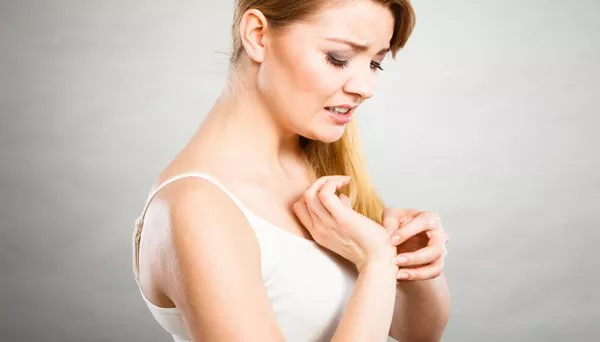Aquagenic urticaria is an extremely rare skin condition that causes hives or allergic-like reactions when the skin comes into contact with water. Despite its rarity, it has gained attention due to its unusual nature and the significant impact it can have on a person’s quality of life. This article explores the symptoms, causes, and treatment options for aquagenic urticaria.
What is Aquagenic Urticaria?
Aquagenic urticaria is a type of physical urticaria (hives) triggered by exposure to water, regardless of temperature or source. It affects both males and females, typically emerging during puberty or adolescence, although cases in children and adults have also been documented.
Unlike typical allergic reactions, aquagenic urticaria does not involve the immune system reacting to water itself but to a reaction triggered by the contact of water with skin components.
Symptoms of Aquagenic Urticaria
Skin Reactions
The most common symptom is the rapid development of small, red, itchy hives or wheals on the skin. These appear within 15 to 30 minutes after contact with water and may last for 30 minutes to two hours. The affected areas often have a burning or stinging sensation, which can be more distressing than the visible rash.
Areas Commonly Affected
- Arms, chest, and back are most frequently impacted.
- Face and scalp may also react but are less commonly affected.
- Palms and soles are usually spared.
Other Symptoms
Though rare, some individuals may also experience:
- Headaches
- Wheezing or shortness of breath
- Dizziness
- General fatigue after water exposure
Causes of Aquagenic Urticaria
The exact cause of aquagenic urticaria is not fully understood. However, several hypotheses have been proposed:
Chemical Interaction Theory
One of the leading theories suggests that water interacts with components on or within the skin, producing a substance that causes a histamine release and an allergic-type reaction.
Skin Barrier Dysfunction
Some researchers believe the skin’s protective barrier may be compromised, allowing water to penetrate and stimulate underlying nerve endings or immune responses, resulting in hives.
Genetic Factors
There are rare reports of familial cases, suggesting a possible genetic link, although no specific gene has been identified.
Hormonal Influence
The onset of aquagenic urticaria during puberty in many cases implies a potential hormonal connection. However, more studies are needed to establish this relationship.
Diagnosis
Because it is so rare, diagnosing aquagenic urticaria can be challenging. The diagnosis is primarily clinical and based on symptom history.
Water Challenge Test
A dermatologist may conduct a water challenge test, applying water to a small area of the skin (typically forearm) at room temperature for about 20 minutes. The development of hives confirms the diagnosis.
Ruling Out Other Conditions
Other forms of physical urticaria—such as cholinergic urticaria (triggered by heat or sweat) and cold urticaria (triggered by cold)—must be ruled out through patient history and specific provocation tests.
Treatment of Aquagenic Urticaria
There is no cure for aquagenic urticaria, but several management strategies can help reduce symptoms and improve quality of life.
Antihistamines
Daily use of second-generation antihistamines (like cetirizine or loratadine) is typically the first line of treatment. These medications reduce histamine levels and alleviate hives and itching.
In more severe cases, higher doses or combining multiple antihistamines may be necessary under a doctor’s supervision.
Barrier Creams and Oils
Applying barrier creams or water-repellent lotions before water exposure may help prevent the reaction by limiting water contact with the skin. Petroleum jelly and oil-based emollients are commonly used.
Phototherapy
Some patients respond well to phototherapy, especially narrowband UVB treatment, which may help improve skin tolerance over time. However, this is usually considered when standard treatments fail.
Omalizumab (Xolair)
In resistant or severe cases, omalizumab—an injectable medication commonly used to treat chronic urticaria—has shown promise. It works by blocking the activity of IgE, a key molecule involved in allergic reactions.
Lifestyle Modifications
Shorter showers: Limiting time in the shower and using lukewarm water can help reduce reactions.
Protective clothing: Wearing long sleeves or gloves during exposure to water (e.g., in the rain or when washing dishes) can minimize symptoms.
Drying immediately: Quickly and gently drying the skin after water exposure may lessen the severity of the rash.
Coping with Aquagenic Urticaria
Living with aquagenic urticaria can be emotionally and socially challenging, especially given the importance of water in daily hygiene and routines. Support from healthcare providers, family, and patient communities is vital.
Psychological Impact
The condition can lead to anxiety, depression, or social withdrawal. Some patients fear everyday activities like bathing or swimming, which significantly impacts their quality of life.
Support Groups
Online forums and rare disease communities can provide a valuable source of information, support, and shared experiences for those coping with this condition.
Research and Outlook
Due to the rarity of aquagenic urticaria, research is limited, and treatment approaches are based largely on case reports and expert opinion. However, growing awareness and advances in dermatology are paving the way for better understanding and future therapies.
Continued reporting of new cases and clinical studies will help uncover the underlying mechanisms of the condition and open doors to targeted treatments.
Conclusion
Aquagenic urticaria is a rare but serious condition that can significantly affect daily life. While the exact cause remains unknown, the condition can often be managed effectively with antihistamines, topical barriers, and other supportive measures. Accurate diagnosis, patient education, and individualized care plans are essential for managing symptoms and maintaining quality of life. With ongoing research, hope remains for more effective and lasting treatments in the future.
You Might Be Interested In:

